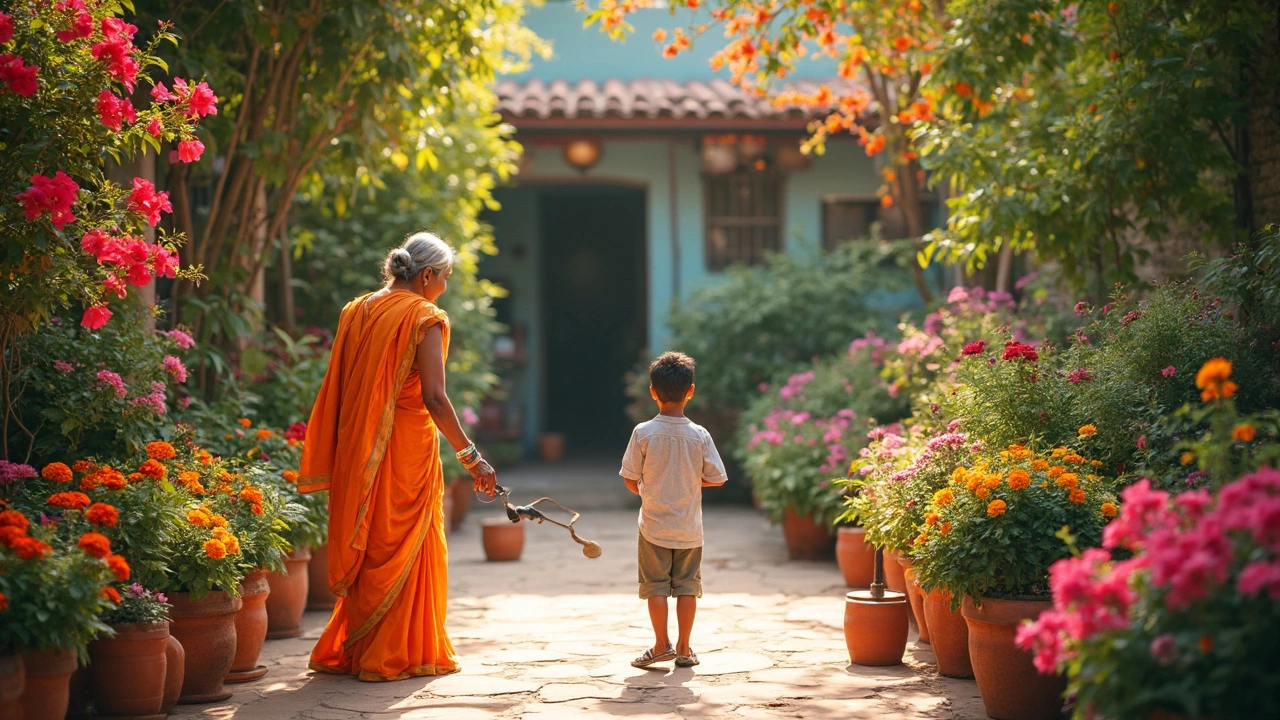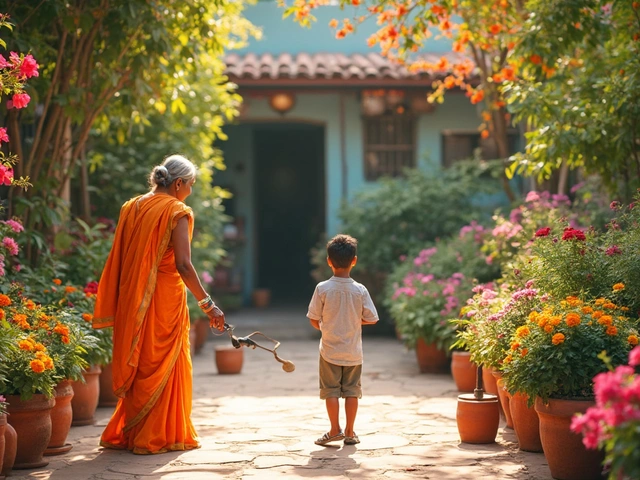If you’ve ever stood in your garden staring at brown, tired blooms while your neighbor’s colors go on forever, you know the struggle. Picking plants isn’t just about pretty petals—bloom time can make or break your garden’s vibe. The good news? Some plants are diehard performers, pushing out fresh flowers week after week, even in India’s humid, unforgiving sun.
Take the marigold, for example. Indians have trusted this bright bloom for celebrations and front yards because it just refuses to give up—it can flower for five to six months straight with basic care. Now imagine mixing marigolds with equally tough perennials like zinnias or vinca. That’s when you start seeing gardens that keep their punch right from spring to late autumn.
- What Makes a Bloom Last Long?
- Top Longest Blooming Plants in India
- Tips to Maximize Bloom Time
- Common Mistakes: Why Your Flowers Quit Early
What Makes a Bloom Last Long?
Plants aren’t just about appearance—some are marathon runners when it comes to flowers. The secret? It comes down to a mix of genetics, climate tolerance, and a plant’s basic needs. Most of the longest blooming plants share a rebellious streak; they quickly push out new buds as soon as the old ones fade.
If you look around at Indian gardens, you’ll see that certain species dominate just because their flowers stick around so much longer. Marigolds, zinnias, and periwinkles (vinca) top the charts for sheer persistence. But what’s happening inside these plants that makes them such diehards?
- Longest blooming plants are usually annuals or tough perennials. They keep cycling through their bloom phase without getting “tired.”
- They can take rough weather. A marigold can handle city pollution, heavy rain, or that wall of summer heat. As long as you’re not flooding the roots, they’ll survive.
- Sunlight is a game-changer. The big bloomers want at least 5–6 hours of light every day. The more sun, the more flowers.
- Pruning matters. Deadheading—the simple act of snipping off spent blooms—makes space for new ones. If you skip this, you’ll cut short the show fast.
- Soil quality is key. Rich, well-drained soil means better blooms. Get lazy with nutrients, and even the freshest seedling can stall.
Here’s a quick snapshot on what gives top performers their edge:
| Plant Name | Peak Bloom Duration (Months) | Best Climate |
|---|---|---|
| Marigold | 5–6 | Warm, sunny |
| Zinnia | 4–5 | Hot and dry |
| Vinca (Periwinkle) | 8–9 | All regions |
| Petunia | 4–5 | Cooler months |
The bottom line: pick the right species, give them what they need, and don’t skimp on care. You’ll get more flowers for longer, without extra hassle.
Top Longest Blooming Plants in India
So, what blooms stick around and give your garden non-stop color in India? Some plants win the marathon, not the sprint—and they're made for our sun, rain, and heat.
The all-time champion is the marigold. With just a bit of water, these guys will bloom for up to half the year. That’s why you see them everywhere during festivals. Next up is zinnia. Zinnias can flower from March till early winter if you keep plucking off dead heads. They don’t just last long; they’re super easy for beginners.
- Marigold (Tagetes): Grows almost anywhere, hands down the most popular for long blooms. They last up to six months in India’s growing seasons.
- Zinnia: If you want every color on one plant, zinnias are your go-to. They can push out blooms for 4–5 months.
- Periwinkle (Vinca): This one even stands up to summer heat and wants barely any fuss. It can flower year-round in southern India, but in most areas, you’ll get continuous flowers for 7–8 months.
- Portulaca (Moss Rose): Tiny flowers, but don’t underestimate them—these will flower on hot days and survive dry spells. Expect almost 5 months of color.
- Petunia: These do best from late winter through spring, lasting roughly 4 months. With deadheading, they really shine.
- Ixora: Not just an old-school hedge, this shrub puts out small bright clusters for many months, especially if you trim back after each wave.
Here’s a quick view of how long you can expect them to bloom in typical Indian home gardens:
| Plant | Bloom Duration (Months) | Best Growing Season | Level of Care Needed |
|---|---|---|---|
| Marigold | 5-6 | Winter to Early Summer | Low |
| Zinnia | 4-5 | Spring to Autumn | Low |
| Periwinkle (Vinca) | 7-8 (South India); 4-6 (Rest) | Year-Round / Spring to Autumn | Very Low |
| Portulaca | 4-5 | Spring to Autumn | Low |
| Petunia | 3-4 | Late Winter to Spring | Medium |
| Ixora | 4-6 | Spring to Monsoon | Low |
The best thing? All these plants are easy to find in nurseries and don’t demand much, making them perfect for busy people or anyone just learning the ropes. Mixing a few of these in your garden ensures something will always be blooming—no matter the month.

Tips to Maximize Bloom Time
You want your plants to keep going strong for months, not weeks, right? A few smart moves can squeeze every last gush of color from your garden—even in India’s tricky climate. Here’s what really works when it comes to boosting those bright stretches of longest blooming plants:
- Deadhead Regularly: Pinch or snip off faded flowers as soon as they wilt. This quick habit signals to the plant to make more blooms instead of wasting energy on seeds. Marigold and zinnia love this treatment.
- Feed the Soil Smartly: Before and during flowering, give your plants a top-up of good, balanced fertilizer. Use NPK (nitrogen-phosphorus-potassium) in the ratio of 10:10:10 every 4-6 weeks. Too much nitrogen, though, and you’ll get leaves instead of flowers!
- Get Sunlight Right: Most top bloomers in India need at least 5–6 hours of direct sun. If your patch is shady, try shade-tolerant options like impatiens, but don’t expect marathon flowers from sun-lovers stuck in the dark.
- Water with Care: Skip the daily overhead splashing. Aim for deep watering about twice a week, early in the morning. This builds stronger roots, which equals more blooms.
- Pest Patrol: Watch those marigold leaves! Aphids and spider mites show up every season. Mix a little neem oil with water and spray—it keeps most bugs off without harsh chemicals.
Wondering how these tips play out in reality? Check out the table below for rough blooming windows in Indian conditions—if you keep up good care:
| Plant | Typical Bloom Time (Months) | Start of Flowering (Month) |
|---|---|---|
| Marigold | 5-6 | October/November |
| Zinnia | 4-5 | June/July |
| Vinca (Periwinkle) | 6-8 | May/June |
| Petunia | 3-4 | December |
Just sticking with a reliable routine—deadheading, feeding, and watching the weather—makes a world of difference. Skip these steps, and you’ll probably end up with flowerless stems halfway through the season.
Common Mistakes: Why Your Flowers Quit Early
Ever wonder why you buy the longest blooming plants at the nursery, but a few weeks later, they’re done? There are some sneaky mistakes that can mess with even the toughest growers. Most folks think flowers just need water and sun, but there’s more at play, especially in Indian gardens.
One of the worst culprits is overwatering. Hot Indian summers make us think our plants need a daily bath, but soggy roots can actually kill blooms fast. If your marigolds wilt or rot, it’s probably because their roots are drowning. On the flip side, under-watering is just as harmful. Zinnias and vinca can take dry spells, but they won’t keep flowering if the soil turns to dust.
Feeding is another trap. Loads of people dump generic fertilizer hoping for more flowers, but too much nitrogen sends plants into leafy overdrive—leaves go wild, but flowers vanish. Stick with a balanced or low-nitrogen fertilizer every few weeks for consistent blooms.
Deadheading gets ignored way too often. If you don’t snip off wilted flowers, the plant thinks its job is done and stops trying. A few minutes of deadheading every week can double your blooming time, especially for longest blooming plants like marigolds, zinnias, and cosmos.
Check out this quick table for a snapshot of what hurts long-lasting flowers the most:
| Mistake | Effect on Blooms | Plants Most Affected |
|---|---|---|
| Overwatering | Root rot, yellowing, early death | Marigold, Petunia, Dahlia |
| Under-watering | Wilting, stunted growth, bud drop | Zinnia, Vinca |
| Too Much Nitrogen | Lots of leaves, fewer flowers | All annuals and perennials |
| No Deadheading | Shorter bloom period | Cosmos, Marigold |
| Too Much Shade | Fewer or no flowers | Zinnia, Petunia |
Lastly, don’t forget about sunlight. Some people love putting flower pots under trees or in corners with barely any sun, but these plants crave at least six hours of light daily. No sun, no fun—they just won’t bloom to their full potential.



